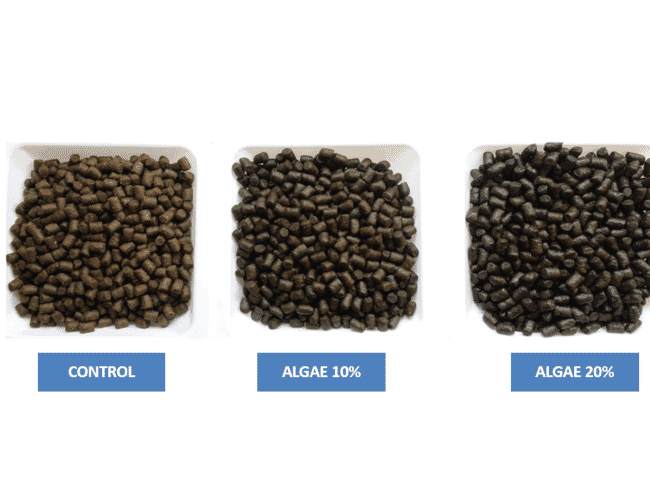Here he explains to The Fish Site, how byproducts from the biofuel industry – the defatted biomass of Nannochloropsis and Desmodesmus species of algae – can be an suitable alternative ingredient to the fishmeal currently used in aquafeeds.
How much feed is used in the Norwegian salmon industry each year?
Norway’s salmon industry uses approximately 1.5 million tonnes of feed each year.

How much of this is of marine origin and how has this level changed over time?
In 1990, fishmeal and fish oil accounted for 83 percent of the total feed constituents of salmon feeds. As the salmon industry has grown significantly since then, the feed companies have reduced the use of these finite marine ingredients. Today’s feeds contain less than 26 percent of these ingredients, and the rest comes from plant sources such as soya, wheat, corn, peas and beans.
Why are alternative ingredients needed?
To improve the sustainability of the salmon industry, we must reduce its dependence on marine ingredients, but alternative ingredients derived from plants are known to affect growth and cause health problems in salmon – including dose-dependent growth inhibition and intestinal enteritis. Furthermore, the plant oils in aquafeeds influence the quality of the product, as they contain less of the long chain omega-3s EPA and DHA than fishmeal and fish oil. Microbe-derived ingredients such as those from microalgae, which have high nutritional value and a relatively low impact on the environment, are promising alternative sources of these fatty acids.
What inspired you to use these two particular strains of algae?
The biomass from the two microalgae were obtained from a microalgal biorefinery – as co-products after the biofuel extraction. The rationale was to make use of the nutrient-rich co-product in aquafeeds, eventually for producing human food.
Where did you source them from?
Our studies were part of the project “Large-scale production of fuels and feed from marine microalgae” awarded to the Cornell Marine Algae Biofuels Consortium by the US Department of Energy. The microalgal biomass was produced by the Hawaii-based company Cellana, a member of the consortium.

© Yangyang Gong
What trials did you use?
We conducted digestibility studies and feeding experiments using feeds containing 0, 10 and 20 percent algal content. The results from the digestibility studies helped us to understand the ability of salmon to utilise the nutrients from the algae, and those from the feeding studies provided information on the growth and health aspects.
What were the highlights of your results?
The algal diets were well accepted by the fish, indicating high palatability. The digestibility values of the two defatted microalgae biomass differed significantly. Salmon were able to digest the protein and energy from Nannochloropsis sp. better than those from Desmodesmus sp. The two algae did not impair the growth or health of Atlantic salmon, nor did they induce intestinal inflammation.
Did the inclusion of these ingredients alter the nutritional profile of the salmon?
The nutritional profiles of the salmon were not altered after the feeding with the two algae.
What can the salmon feed industry learn from your study?
The chemical composition of microalgae is dependent on the strain and the production methods. The feed industry can choose these algae as ingredients in salmon feeds. Additional processing of the algae may increase nutrient availability.
Algae are better known for their oil content, what inspired you to look at them as a protein source instead?
Microalgae are fairly rich in lipids, depending on the species, but they also have high quality protein. The products we used in our experiments had all the essential amino acids required by fish. Our aim was to demonstrate the value of the algal co-products as feed ingredients for a high-value carnivorous species.
What are the logical next steps?
Refine the algal processing methods to increase the nutrient availability. Also test other algal types to understand their potential as ingredients and to pick species that are best suited as salmon feed ingredients. Currently, only a limited amount of microalgal biomass is produced globally, and hence only through a rapid growth of the algal industry can their adoption as mainstream aquafeed ingredients be realistic.
Do you think it would be economically possible to use these species prior to being processed for biofuel, so as to include their high lipid levels?
The current production costs of microalgae cannot easily permit the use of whole algae as a feed ingredient. It can only be an additive until large volumes of microalgae are available in the market at affordable prices.
For further information contact the lead scientists of the study at Nord University, Norway Kiron Viswanath (kiron.viswanath@nord.no) and Mette Sørensen (mette.sorensen@nord.no)


